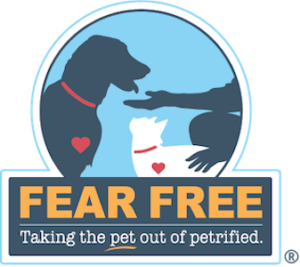Communication is the key to building a strong relationship with clients. And in these days of infection and fear, a relationship built on trust is more important than ever. Your knowledge as a Fear Free practitioner can help.
That’s especially true when clients are experiencing not only fear of illness for their pets but also for themselves. They may worry about not being able to be with their pet in the exam room because disease-prevention protocols require them to stay outside the clinic. Or they may not even want to come to the clinic.
Your ability to help them get necessary care for their pet relies on good communication—even overcommunication. Relieving client anxiety about their pets’ overall wellbeing, new procedures, and concerns about contracting COVID-19 begins with answering questions they might not even have thought to ask. Here are some things you can tell them about policies and procedures you’ve implemented to keep clients, pets, and staff healthy and safe as well as alternatives to in-office visits.
A veterinary hospital is one of the safest public places to go right now. It is designed to be disinfected. It doesn’t have plush fabrics that harbor pathogens. Every part of the exam room, the lobby, and all other areas can be—and are—disinfected before and after your visits. It’s an opportunity to share how seriously your hospital takes infection control and that those procedures have always been in place and continue to be in place.
Practice preventive appointments. Train front-desk staff to ask clients who call for an appointment if they are showing signs of fever or illness, shortness of breath or coughing, or if they’ve traveled to a high-risk area. It doesn’t mean they can’t come in but it gives you the opportunity to offer an appointment via telemedicine.
Sophisticated disinfectants protect pets and people. Some don’t leave a lingering chemical odor but their accelerated hydrogen peroxide technology kills bacteria, viruses, and fungi faster than bleach or other disinfectants.
Communicate and review the goals of the visit. For a wellness visit, that means greeting them, explaining how you’ll examine the pet and what you’re looking for, concluding with making a plan for future preventive care and treatment if needed.
Note any fear, anxiety, or stress on the part of the pet and how you’ll address that. Owners, who are probably experiencing a little FAS themselves, will feel less anxious knowing that you want to make the visit a good experience for their animal. The client can help by offering positive reinforcement through praise and treats. Bonus: when clients relax, pets often follow suit.
All of that takes place within the first 60 to 90 seconds after you walk into the room. You may have even begun to conduct the exam without the owner or pet noticing.
What if you’re conducting an exam or providing treatment while the owner is outside the clinic, and you know that both person and pet are anxious about the separation? Address it while you’re picking up the pet at the car by acknowledging the animal’s past history of anxiety at the clinic and how you plan to keep that at bay.
For a dental, for instance, he’ll get his pre-anesthesia exam right away, be evaluated for his emotional state so you can provide medical support if needed, have the procedure, and then be cared for in a way that meets his emotional needs. Knowing what will happen goes a long way toward tamping down owner anxiety.
Whenever possible, whether the owner is present at the exam or not, communicate what you’re finding in a way that affirms the owner’s good care of the pet. Find what’s good about what they’re doing, whether it’s something as simple as a cute haircut or bringing the pet in for the exam or as important as giving parasite preventive.
Reinforce that to get—and keep—them excited about good pet care. When owners hear that positive reinforcement, they’re more likely to listen to and actually hear what you’re saying when you make recommendations. By practicing Fear Free, you meet the emotional needs of both owners and animals. That foundation is the rock on which solid client relationships are built.
This article was reviewed/edited by board-certified veterinary behaviorist Dr. Kenneth Martin and/or veterinary technician specialist in behavior Debbie Martin, LVT. This post is brought to you by our sponsor, Elanco, the makers of Credelio® (lotilaner) and
This post is brought to you by our sponsor, Elanco, the makers of Credelio® (lotilaner) and
Interceptor® Plus (milbemycin oxime/praziquantel).
© 2020 Elanco. PM-US-19-1901




